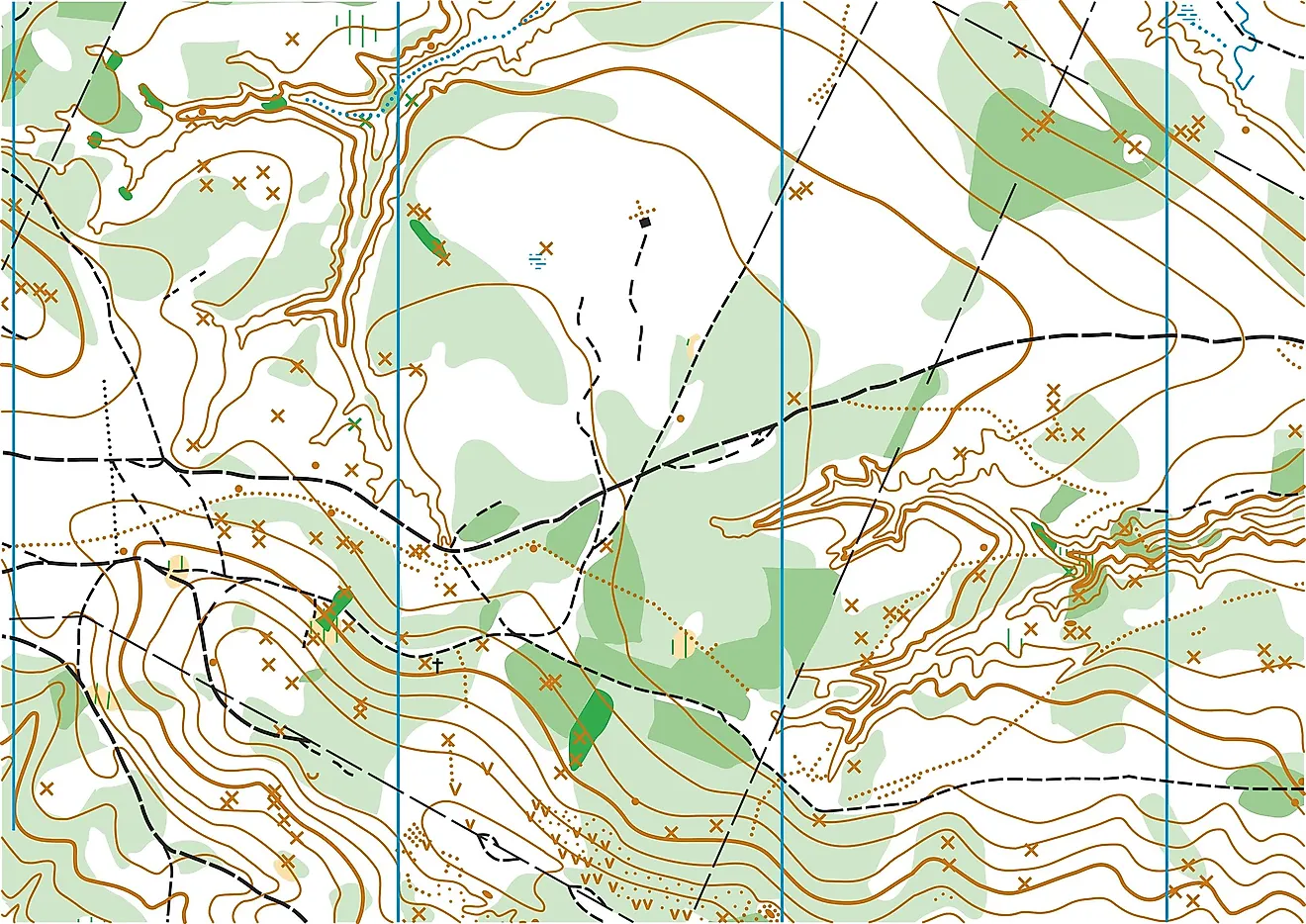

Interestingly, many geologists are quite visual and like to have visual representations of data. Topographic profiles are used to understand what a topographic map is telling you in a specific area (or, you can think about it like it is giving you a "side view" of the landscape along a specific line on the map). When should I construct a profile? In introductory geoscience courses, a profile is appropriate when you are asked to construct a cross-section or profile.

For topographic profiles, you must extrapolate the contour of the landscape (that is, whether it goes up or down) when faced with repeating elevation contours. In the case of constructing a topographic map, you must extrapolate the placement of the appropriate elevation contour. This is different from the plotting of a best fit line because it involves extrapolation of information from spatial data. In such instances, you will be asked to plot some points and connect them with a smooth line. When working data with topographic maps, topographic profiles and their construction, we often ask you to connect data points with a smooth curve. There are other instances in mathematics and graphing where a smooth curve is necessary (e.g., exponential curves, sine waves, etc.) this page is focused on a specific instance when you will construct a topographic profile from a two dimensional map. This page is geared toward thinking about the shape of landscapes and pretty unique to geoscience courses. If you aren't sure how to plot points on a graph, please make sure you visit and work through the plotting points tutorial before moving on with this part of the graphing pages. Other parts of this resource on graphing take you through plotting points and constructing a straight line through data points. How do I construct a topographic profile?


 0 kommentar(er)
0 kommentar(er)
